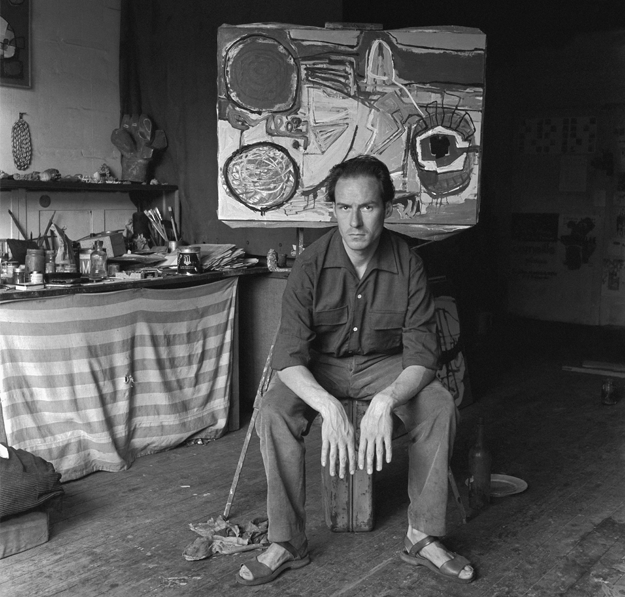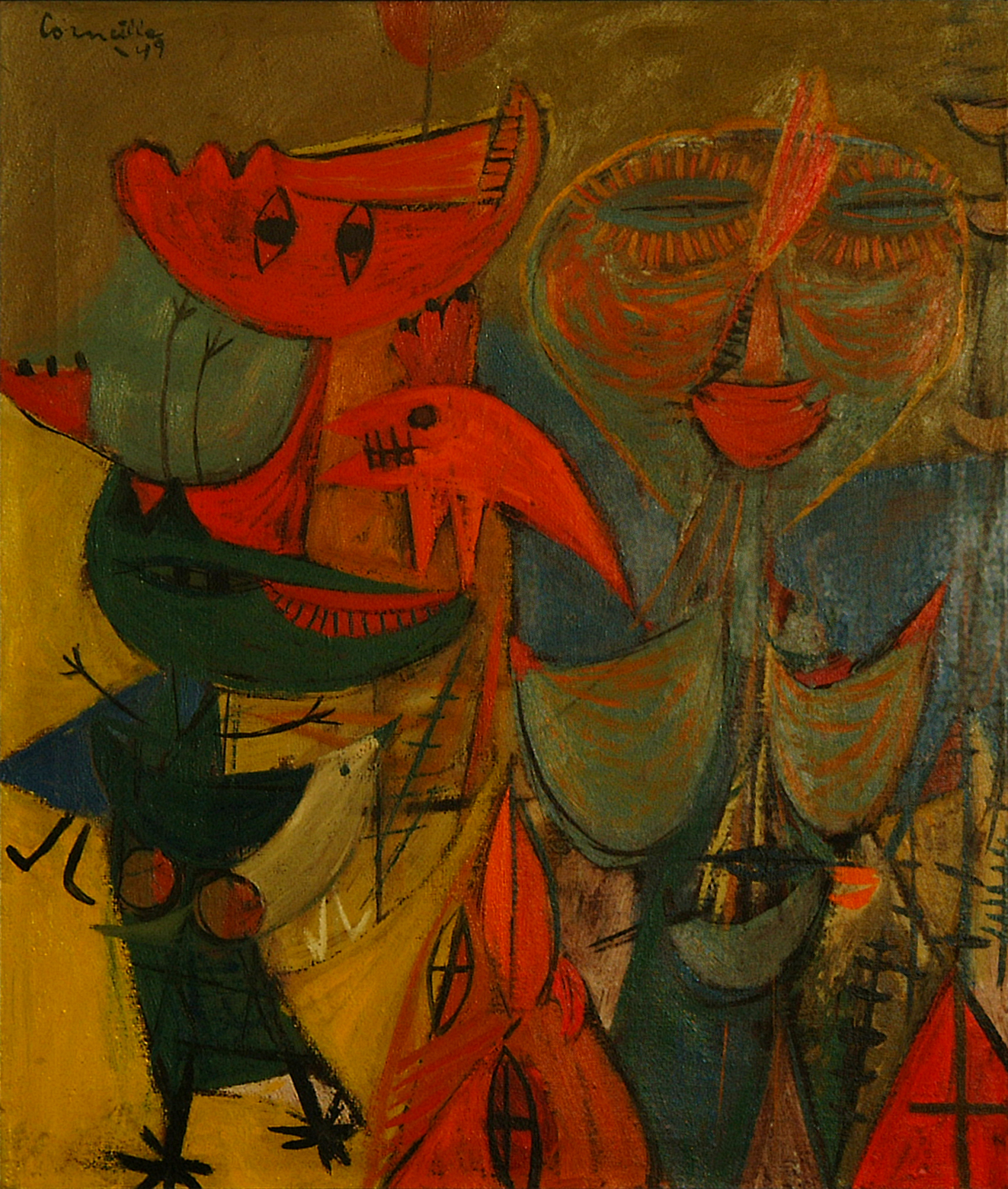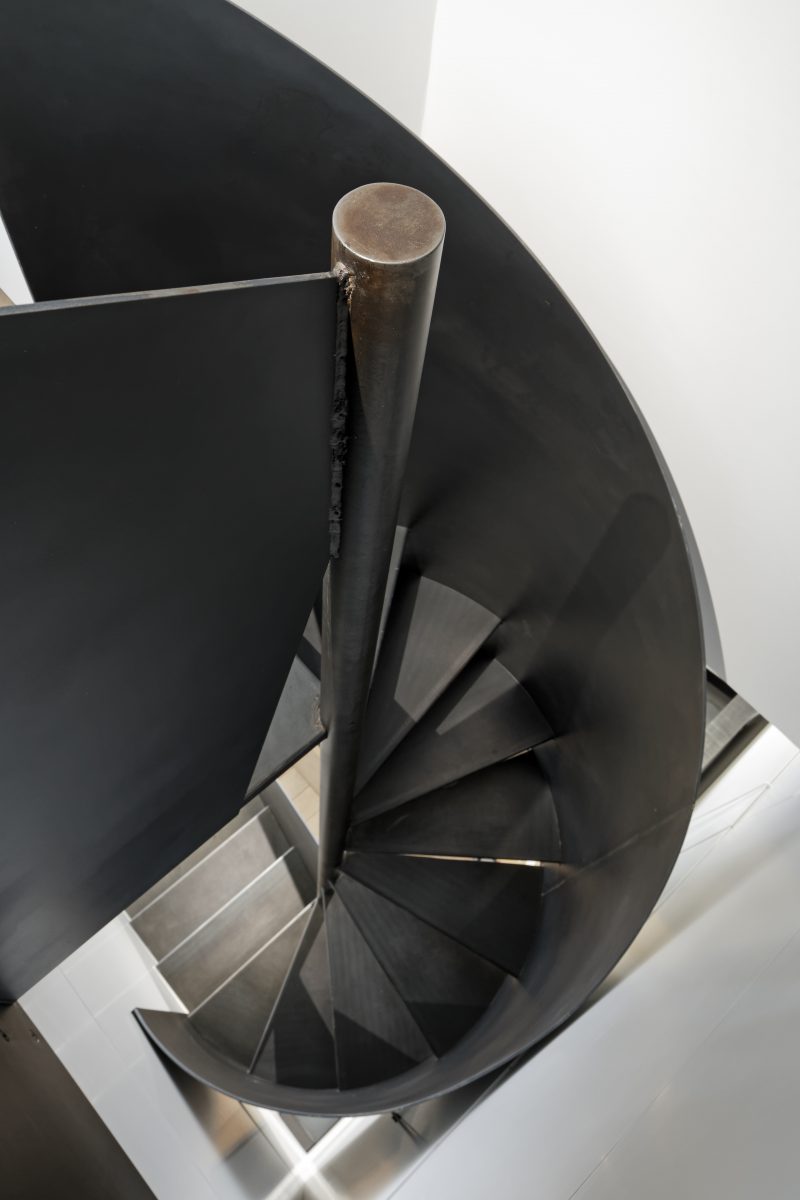1963 Galerie Creuzevault, with a text by André Pieyre de Mandiargues; Six propositions pour un spectacle de la nature, Galerie Point Cardinal, Paris.
Numerous exhibitions outside France: Netherlands, London, Brussels, Stockholm, New York.
Corneille participated in a large number of group exhibitions including: 1950, Mains Eblouies, Galerie Maeght, Paris; Tendances, Galerie Colette Allendy; 1953, second Salon d’Octobre, Galerie Craven, with which he signed a contract. 1955 Trente Peintres de la Nouvelle École de Paris, Galerie Craven; Paroles visibles, Galerie La Roue; Alice in Wonderland, Galerie Kléber, preface by Charles Estienne. 1956 Dix jeunes peintres de l’École de Paris, Galerie de France; Présence du bleu, Galerie La Roue; Divergences 4, Galerie Arnaud. 1957 Expression et non-figuration, Galerie Le Gendre; Divergences 5, Festival de l’Art d’avant-garde, Cité Radieuse, Nantes and Galerie Arnaud, and in Berlin. 1959 Peintres du dépaysage, Galerie La Roue. 1961 Wols, Corneille, Galerie Mathias Fels. 1964 Quinze peintres de ma génération, Galerie Ariel; Signes, Galerie La Roue. He was invited to the Salon de Mai very regularly from 1951, and was also a member of the committee; he was invited to the Réalités Nouvelles in 1956, 1957, 1958 and 1959 with Songes des pierres and in 1960 with Jardin propice à l’oiseau; to the Salon Comparaisons in 1958 and 1959. Salon Grands et Jeunes d’aujourd’hui in 1964. Biennale de Paris in 1957, École de Paris, Galerie Charpentier in 1961 and 1963. Abroad: 1953 and 1959 Sao Paulo Biennial. 1954, Venice Biennial.
Corneille made prints from 1953, studying with Hayter, as well as ceramics with Mazzoti at Abbisole-Mare from 1954 to 1955, where he met Jorn and Baj.
This is what Corneille had to say about his painting: “My themes are in the texture, colour, nascent lines, interlacings, entanglements, stains… For me, the bird relates its own trajectory, it is movement or eye, recording other trajectories… The subjects interpenetrate, merge, forming a turbulent whole, crying or armed with a terrible silence… The painting is no longer the woman seen from the back, or front, the nude odalisque, cleverly reconstructed with the help of cubes, squares or stains, but a woman seen by the bird, imagined by the stone, framed on a lake, finely written in the sky, the sand, the bird” (interview with Charles Estienne and José Pierre, Medium, 1955).
1966 Corneille, Stedelijk Museum, Amsterdam. Catalogue. Text by Max Loreau: Corneille l’arpenteur.
Museums: Amsterdam – Haarlem – Paris, Art Moderne.
- Hubert Juin, Hugo Claus: Seize peintres de la Jeune École de Paris. Le Musée de Poche, 1956.
- Jean-Clarence Lambert: Corneille, Le Musée de Poche, Georges Fall, 1960.
- André Laude: Corneille, Le Roi-Image. SMI Paris Diffusion Weber, 1970.
- Marcel Paquet: Corneille. Dellile, 1988


